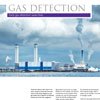Sensing technologies for combustible gases
Toxic Gas
Sensing Technologies for Toxic Gases
Asphyxiate gases
Gas detection systems usually fall into three categories
Considerations:
Flash Point and Auto Ignition Temperature
The following issues may contribute towards a major accident or hazard
Gases and vapours other than air can pose a threat to human life. The exact nature of this threat depends on the gas present, but in general we divide gas hazards into three main categories:
- Combustible
- Toxic
- Asphyxiant.
Combustible gases can burn or explode, possibly causing extensive damage to plant and personnel. (The words flammable and inflammable are sometimes used in place of combustible.)
Commonly encountered examples of such gases are ethane, butane and acetylene, although the complete list of combustible gases is extremely large.
Oxygen behaves differently to air, compressed air, and other inert gases. It is very reactive. Pure oxygen, at high pressure, such as from an oxygen cylinder, can react violently with common materials such as oil and grease. Other materials may catch fire spontaneously. Nearly all materials including textiles, rubber and even metals will burn vigorously in oxygen.

